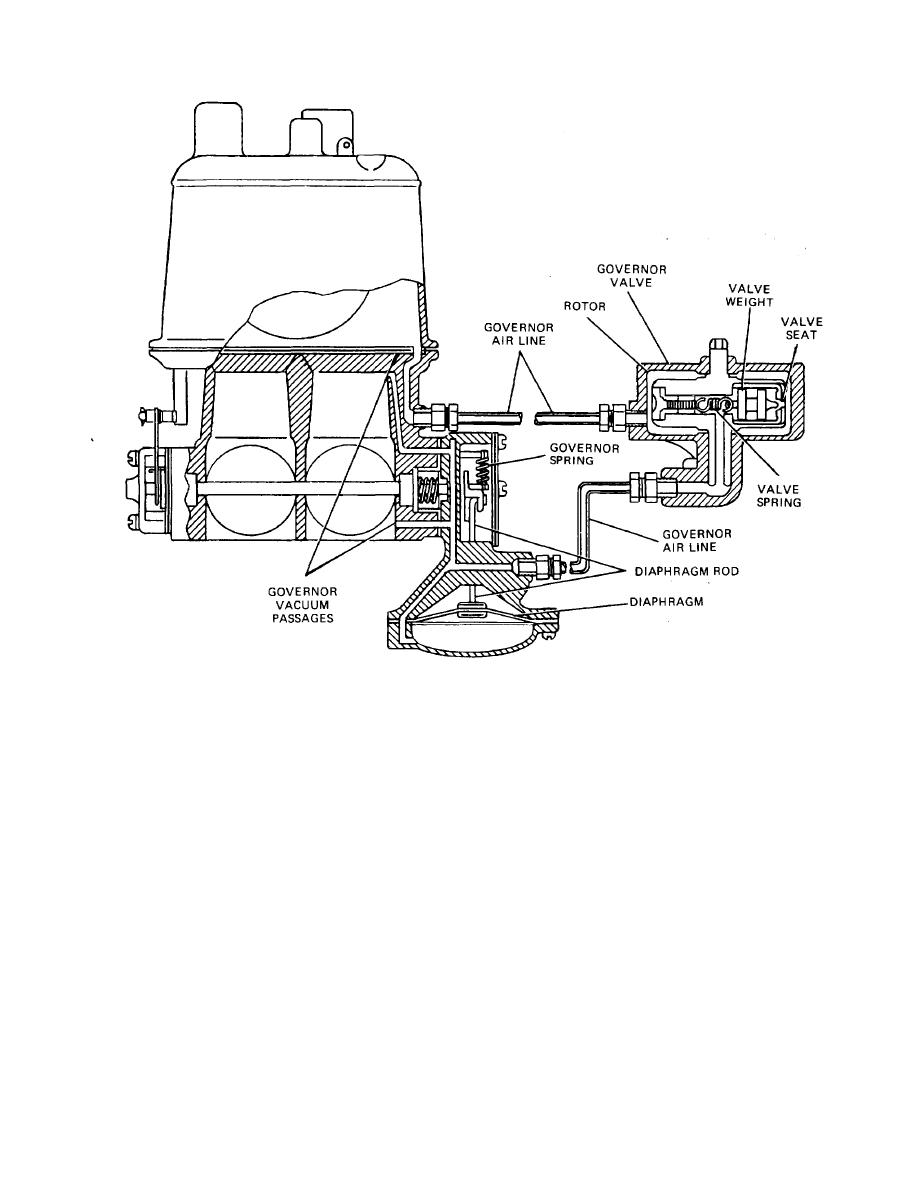
| Tweet |

Custom Search
|
|

|
||
 TM 9-8000
Figure 4-75. Centrifugal-Vacuum Governor.
Section VIII. CHARACTERISTICS OF GASOLINE
performance during normal operation. The rate of
4-36. Origin. Petroleum is the most common source
vaporization increases as the temperature increases and
of fuel for modern internal combustion engines. It
as pressure decreases. The volatility of gasoline must
contains two important elements: carbon and hydrogen.
be regulated carefully so that it is volatile enough to
These elements are in such proportions that they will
provide acceptable cold weather starting, yet not be so
burn freely in air and liberate heat energy. Petroleum
volatile that it is subject to vapor lock during normal
contains a tremendous amount of potential energy. In
operation. Refiners introduce additives to gasoline to
comparison to dynamite, in fact, a gallon of gasoline has
control volatility according to regional climates and
six times as much potential energy. Gasoline is the most
seasons.
popular petroleum-based engine fuel. It has many
advantages, two of which are a better rate of burning and
a. Starting Ability. To provide satisfactory cold
easy vaporization to give quick starting in cold weather.
weather performance and starting, the choke system
The major characteristics of gasoline that affect engine
causes a very rich mixture to be delivered to the engine.
operation are volatility, purity, and antiknock quality
Gasoline that is not volatile enough will cause excessive
(octane rating).
amounts of
TA233435
4-37. Volatility in Gasoline. Volatility, as applied to
gasoline, is its tendency to change from liquid to vapor at
any given temperature. The volatility of gasoline affects
ease of starting, length of warm-up period, and engine
4-52
|
||
 |
||